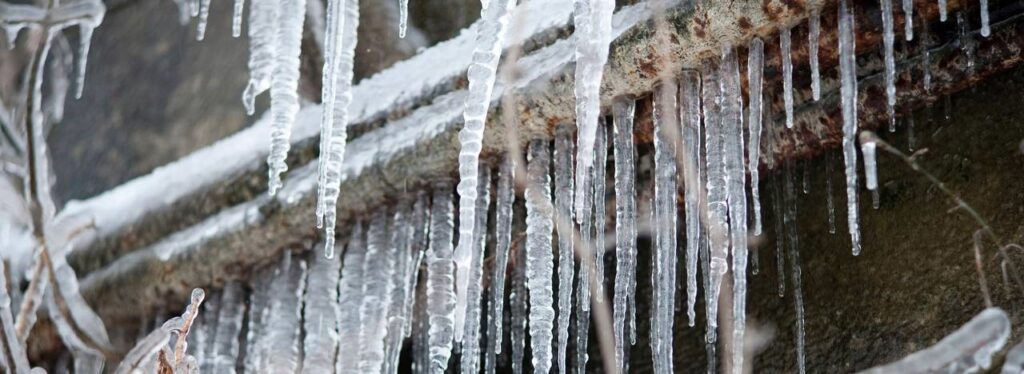Tips to Keep Pipes from Cold Weather Damage: Important Tips
Tips to Keep Pipes from Cold Weather Damage: Important Tips
Blog Article
What are your thoughts and feelings on Prevent Frozen Pipes ?

Cold weather can ruin your pipes, specifically by freezing pipes. Here's how to prevent it from occurring and what to do if it does.
Intro
As temperature levels decline, the risk of frozen pipelines boosts, potentially leading to costly repairs and water damages. Recognizing just how to prevent frozen pipes is important for house owners in chilly climates.
Avoidance Tips
Shielding vulnerable pipelines
Wrap pipes in insulation sleeves or utilize heat tape to protect them from freezing temperature levels. Focus on pipelines in unheated or exterior locations of the home.
Heating strategies
Keep indoor areas properly warmed, especially areas with plumbing. Open up closet doors to allow warm air to circulate around pipes under sinks.
Just how to identify icy pipes
Seek lowered water flow from taps, unusual smells or noises from pipes, and visible frost on revealed pipelines.
Long-Term Solutions
Architectural adjustments
Consider rerouting pipelines far from exterior walls or unheated areas. Add extra insulation to attic rooms, cellars, and crawl spaces.
Updating insulation
Purchase high-grade insulation for pipes, attic rooms, and wall surfaces. Correct insulation aids keep regular temperature levels and lowers the threat of icy pipes.
Protecting Exterior Plumbing
Yard hose pipes and outdoor taps
Disconnect and drain yard hose pipes prior to winter season. Mount frost-proof spigots or cover exterior faucets with protected caps.
Recognizing Icy Pipes
What creates pipelines to freeze?
Pipes freeze when revealed to temperatures below 32 ° F (0 ° C) for extended periods. As water inside the pipelines ices up, it increases, taxing the pipeline wall surfaces and potentially causing them to break.
Risks and damages
Icy pipelines can result in water supply disturbances, residential or commercial property damages, and pricey repairs. Ruptured pipelines can flood homes and create comprehensive structural damages.
Signs of Frozen Pipeline
Recognizing icy pipelines early can avoid them from breaking.
What to Do If Your Pipelines Freeze
Immediate actions to take
If you believe frozen pipelines, keep taps open to relieve stress as the ice melts. Make use of a hairdryer or towels soaked in warm water to thaw pipes slowly.
Conclusion
Stopping icy pipes needs aggressive steps and fast responses. By comprehending the reasons, indicators, and preventive measures, house owners can shield their pipes throughout cold weather.
5 Ways to Prevent Frozen Pipes
Drain Outdoor Faucets and Disconnect Hoses
First, close the shut-off valve that controls the flow of water in the pipe to your outdoor faucet. Then, head outside to disconnect and drain your hose and open the outdoor faucet to allow the water to completely drain out of the line. Turn off the faucet when done. Finally, head back to the shut-off valve and drain the remaining water inside the pipe into a bucket or container. Additionally, if you have a home irrigation system, you should consider hiring an expert to clear the system of water each year.
Insulate Pipes
One of the best and most cost-effective methods for preventing frozen water pipes is to wrap your pipes with insulation. This is especially important for areas in your home that aren’t exposed to heat, such as an attic. We suggest using foam sleeves, which can typically be found at your local hardware store.
Keep Heat Running at 65
Your pipes are located inside your walls, and the temperature there is much colder than the rest of the house. To prevent your pipes from freezing, The Insurance Information Institute suggests that you keep your home heated to at least 65 degrees, even when traveling. You may want to invest in smart devices that can keep an eye on the temperature in your home while you’re away.
Leave Water Dripping
Moving water — even a small trickle — can prevent ice from forming inside your pipes. When freezing temps are imminent, start a drip of water from all faucets that serve exposed pipes. Leaving a few faucets running will also help relieve pressure inside the pipes and help prevent a rupture if the water inside freezes.
Open Cupboard Doors
Warm your kitchen and bathroom pipes by opening cupboards and vanities. You should also leave your interior doors ajar to help warm air circulate evenly throughout your home.

As an avid person who reads about How To Avoid Freezing Pipes, I assumed sharing that section was a great idea. Do you know another person who is in to 6 Ways to Prevent Frozen Pipes? Do not hesitate to promote it. I cherish reading our article about Prevent Frozen Pipes .
Hire A Pro Report this page